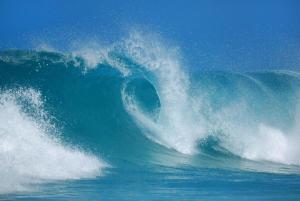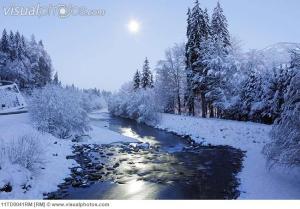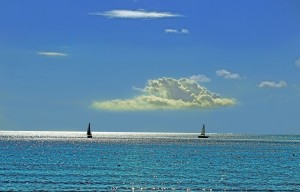One of the consequences of rapid global warming is the rise in sea levels around the globe. As the climate of the world gets warmer, the polar icecaps have begun to melt, increasing the volume of water in the oceans. The warm sea water has also been expanding due to the increased heat, making the sea level rise even faster. Over the past century, sea levels have been rising at an accelerated rate. There has been an extremely unusual rise in the sea levels, of about a 20cm (7.8 inches) in the past century, which, according to theguardian.com, “is unmatched by any period in the past 6,000 years.” Records also show that the sea level has been steadily rising at a rate of 0.04 to 0.12 inches per year since 1900. (NOAA,)
Sea level rise can lead to serious climatic changes and more devastating consequences. With rising sea levels along the coastal areas, the cities and habitats along the coast will soon face the threat of being flooded and swamped. Current evidence shows that the sea level is rising faster with every passing year. A significant portion of the world’s population, living in close proximity to the coastal areas, will be affected by this rapid rise in sea levels.
How much will the sea level rise?
 Scientists are still not sure how much, how fast, or how devastating the sea level rise is going to be in the future. Josh Willis, a climate scientist at NASA’s Jet Propulsion Laboratory, recently told LiveScience that “We know sea level is going to rise, but how much, and how fast, and where, we really still don’t know.”
Scientists are still not sure how much, how fast, or how devastating the sea level rise is going to be in the future. Josh Willis, a climate scientist at NASA’s Jet Propulsion Laboratory, recently told LiveScience that “We know sea level is going to rise, but how much, and how fast, and where, we really still don’t know.”
It turns out that the sea levels around the globe are influenced by various complex factors, and there are no simple ways to determine how fast or how much the ocean waters will rise, over a given period of time.
Wynne Parry, a Senior Writer at LiveScience, says that the ocean waters do not behave in a similar way as your tub water would, when more water is added to it. It doesn’t rise uniformly as more water pours in, so some areas will experience more than average rise in sea level, while other areas may even show a drop in the sea level. However, it has been projected that the sea levels are expected to rise between 8 inches to 6 feet on average, by the end of this century. Scientists know that this rise in the sea level will be caused by expansion of ocean waters due to heat, and also due to the melting of ice caps in the Polar Regions.
Natural and human causes
 On the other side of the coin, skeptics have tried to explain the declining arctic ice by hypothesizing that we’re seeing the effects of natural cycles. According to the theory, the arctic oceans had undergone a period when it was unusually cool (during an ice age) and as a part of the normal recovery process, the ice caps are melting as conditions become more normal.
On the other side of the coin, skeptics have tried to explain the declining arctic ice by hypothesizing that we’re seeing the effects of natural cycles. According to the theory, the arctic oceans had undergone a period when it was unusually cool (during an ice age) and as a part of the normal recovery process, the ice caps are melting as conditions become more normal.
However, events in the past do not explain the newly identified influences on today’s global climate. While it is true that several variables have influenced the melting of arctic ice in the past, there is a difference between the reasons for loss of arctic ice in the past and the present.
According to an article titled: Arctic ice melt is a natural cycle, posted at the Skeptical Science, “Indeed, comparisons between past and present Arctic climate reveal different reasons for yesterday’s and today’s Arctic sea ice changes and strongly suggest that today’s changes are largely anthropogenic ( Overpeck et al ). Analysis of the past 200 years offers an example of how natural and anthropogenic influences on Arctic sea ice can be distinguished.”
Sea level rising faster than anticipated
New data collected from the NASA satellite pictures of arctic ice cap melting already calculated that the global sea level rise is happening at a faster rate than the United Nations’ climate change panel had anticipated. The current rise in sea level is calculated at an annual rate of 0.12 inches, which is 60% faster than the best estimate of Intergovernmental Panel on Climate Change (IPCC), in 2007.
 The rate at which the sea level is rising varies from place to place. It will affect human civilizations and natural habitats closer to the coastal area the most. Although natural factors have always influenced the state of the climatic conditions and melting of the sea ice, research strongly suggests that the rise in sea level is highly driven by the greenhouse gases that we’ve added, CO2 emission, and pollution that we’ve caused. Warming of sea water also expands the water, making it take up more space than it usually would, contributing to more sea level rise.
The rate at which the sea level is rising varies from place to place. It will affect human civilizations and natural habitats closer to the coastal area the most. Although natural factors have always influenced the state of the climatic conditions and melting of the sea ice, research strongly suggests that the rise in sea level is highly driven by the greenhouse gases that we’ve added, CO2 emission, and pollution that we’ve caused. Warming of sea water also expands the water, making it take up more space than it usually would, contributing to more sea level rise.
If the trend of global warming continues, scientists warn that we could have devastating consequences before we could prepare ourselves for the dangers. We all should be aware of the facts that we are adding greenhouse gases to the atmosphere, and we could all take steps, big or small, to minimize our carbon footprints, reduce negative impacts on the planet and make this planet safer for all of us.
P.S: – Please join in with us, and help us to increase awareness about our planet. Leave a comment in the comment box below, and don’t forget to share.




I see you don’t monetize your website, don’t waste your traffic,
you can earn extra cash every month because you’ve got hi quality content.
If you want to know how to make extra money, search for: Mrdalekjd methods for $$$